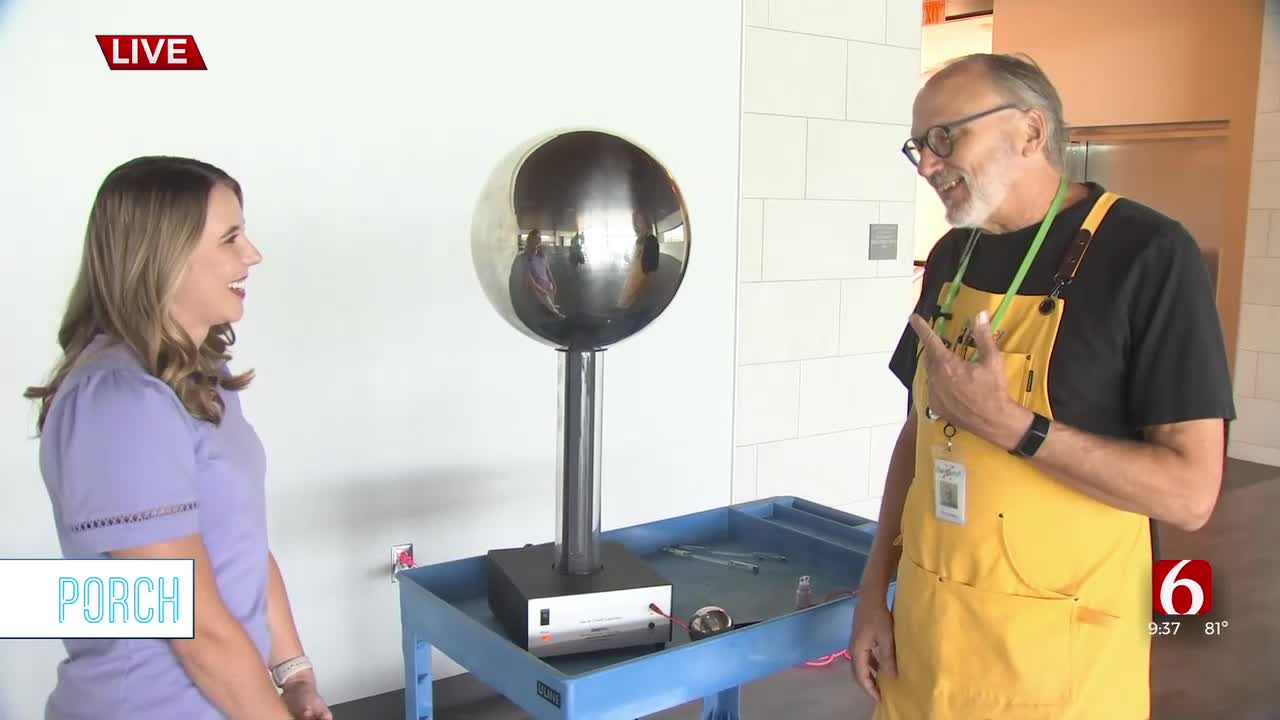The Porch: Science Experiment At Tulsa's Discovery Lab Recreates Lightning
We see lightning often during Oklahoma's storm season. But did you know there's a science experiment to recreate it? On this Coca-Cola Porch, News On 6's Alyssa Miller was live at Discovery Lab with an electrifying look at the process.Thursday, July 11th 2024, 9:57 am
TULSA, Okla. -
Science class teaches kids about protons, neutrons, and electrons.
Discovery Lab is taking that learning a step further by using a Van de Graaff electrostatic generator to demonstrate how these particles work together.
The machine was invented in 1950 by physicist Robert Van de Graaff.
"It makes a direct current electric charge by rolling a rubber band inside the tube and scraping electrons off of the top and dumping them down at the bottom leaving the top sphere positively charged," said Discovery Lab Director of Education Chip Lindsey.
The tool helps us understand the forces of nature that Benjamin Franklin first discovered through experimenting.
"He found out some really basic things that we still know today that like charges, positive and positive or negative and negative, repel," said Lindsey. "They want to get as far away from each other as possible. However, negative and positive are opposite and they attract, they want to form a neutral or ground state."
By standing on a step stool and placing his hand on the Van de Graaff, Lindsey demonstrated how it works.
"When you are charged up, your hair goes on end," he said. "It is because you are positively charged in this instance and so every fiber of hair is trying to get as far away from every other fiber as possible and so it physically moves your hair out."
It is a fun way to get kids engaged and asking questions.
"When you have a firsthand experience with a phenomenon like that, all of a sudden your mind opens up to what is the reason for that," said Lindsey. "Those basic experiences with phenomena then prepare us for understanding, so how does electricity work? How can I get it from here to there?"
Discovery Lab has a summer camp coming up where children will learn this and much more. For more information CLICK HERE
More Like This
September 11th, 2025
September 10th, 2025
August 26th, 2025
Top Headlines
September 22nd, 2025
September 22nd, 2025
September 22nd, 2025
September 22nd, 2025











